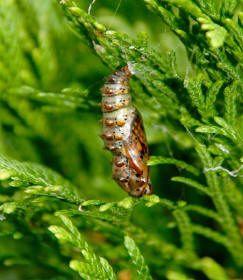Weeds are exceptional competitors. They are nutrient hogs, robbing crops of what they need to thrive. Their growth rate is so fast that they can outpace the growth of desired crops, depriving them of the sunlight they need to get established. In an agricultural or commercial operation, weeds are a problem that must be proactively and effectively managed. Noxious weeds,
like thistle, must be in any situation.
The best way to give weeds the upper hand is to leave the soil bare. Some seeds only need to see the light of day to germinate. Besides that, soil does not like to be naked. Plants of any kind protect the soil surface from eroding and from becoming hardened and impenetrable to water, which is a condition that favors weed growth.
In order to reduce weed germination and be healthy, soil needs to have something continuously growing. Keeping the soil covered with either plants or mulch reduces weed germination. Roots also create organic materials that feed microorganisms, which in turn benefit plant growth. The healthiest soil evolves when it has plants growing year-round-think cover crops.
Since I seem to excel in the growing weeds department, I have found that if I look and listen, weeds have something to teach me. As a homeowner, I have learned which weeds are noxious and must by law be controlled (thistle), which are annoying (crabgrass), and which cannot only be tolerated but appreciated.
Violets, for example, are commonly considered a weed in lawns but they are they are also a host plant for fritillary butterflies. My violets look ragged by the end of the summer but that doesn’t bother me. Instead, I wait for the thrill of seeing a striking fritillary chrysalis hanging on the side of the house as the caterpillar liquefies its guts and reforms as a
butterfly.
 Milkweed is another example. In agricultural settings it must be controlled but it also grows along roadsides where it is a host plant for monarch butterflies. While most first graders know that monarchs migrate all the way to Mexico every year, they probably
don’t know that monarch populations have decreased by 80 percent since the nineties and that milkweed plants growing in urban settings are becoming increasingly important for their survival, as are cultivated milkweeds enjoyed by homeowners.
Milkweed is another example. In agricultural settings it must be controlled but it also grows along roadsides where it is a host plant for monarch butterflies. While most first graders know that monarchs migrate all the way to Mexico every year, they probably
don’t know that monarch populations have decreased by 80 percent since the nineties and that milkweed plants growing in urban settings are becoming increasingly important for their survival, as are cultivated milkweeds enjoyed by homeowners.
And then there is clover- manufacturer of the universal symbol of good luck- the four-leaf clover. In commercial settings it is a problem because it interrupts the appearance of a perfectly manicured lawn. But clover is also a nitrogen fixer so it is able to take nitrogen out of the atmosphere and Houdini it to replenish the soil. As a former beekeeper I am biased in
favor of clover because of its generous supply of nectar that bees use to make honey. I am happy to let clover have its way with what others may call an eyesore but I call a lawn.
Every year the same thing happens to me. As I am tending one bed, a tsunami of weeds grows in front of me and behind. I have unintentionally grown so many weeds over the years that I have become intimately familiar with many of them. My goal has never been to grow the best weeds in town, although I do seem to excel at it. I am learning how to squash some competitors
and embrace others. If necessary, I know that I can always resort to mowing the garden to find a watermelon or taking a weed whipper to my sidewalk so I can see the bricks again.
Read other articles on lawn care & weed control
Read other articles by Susie Hill